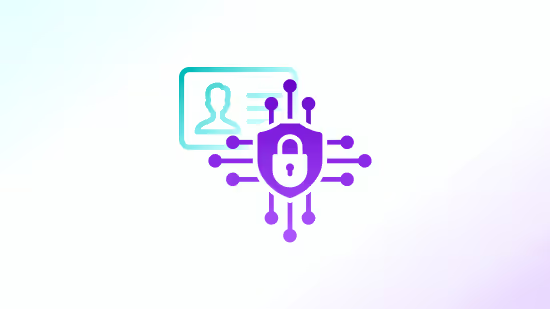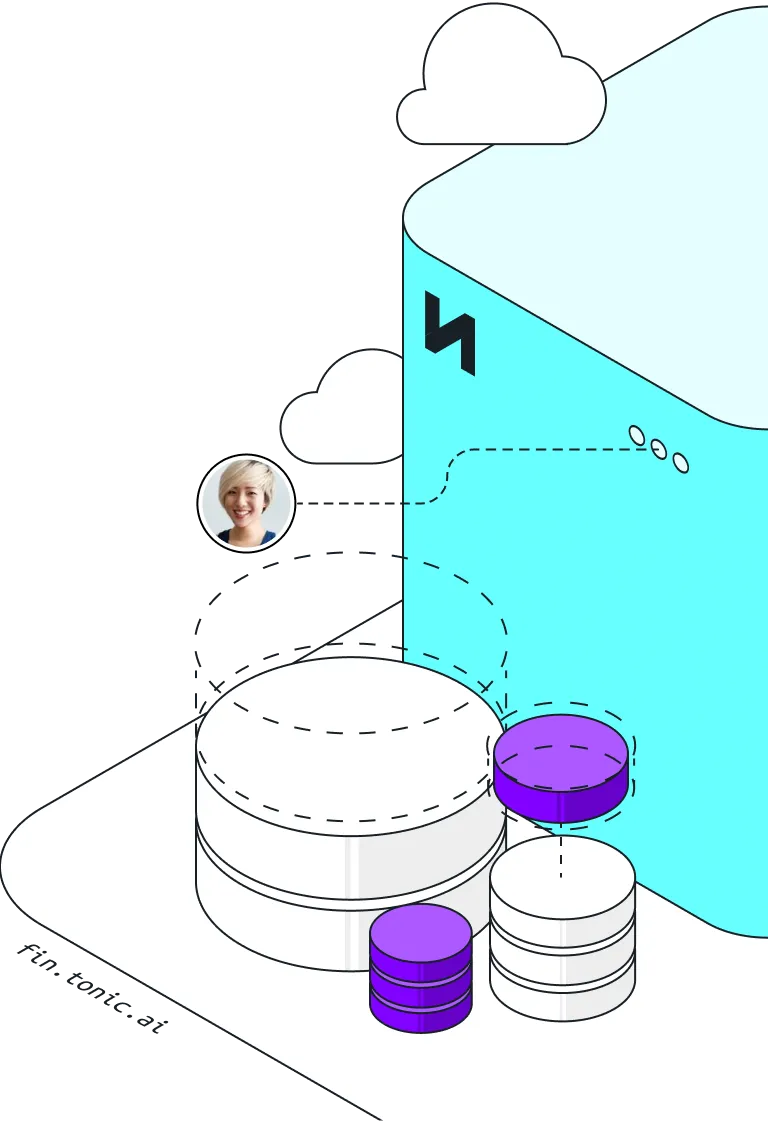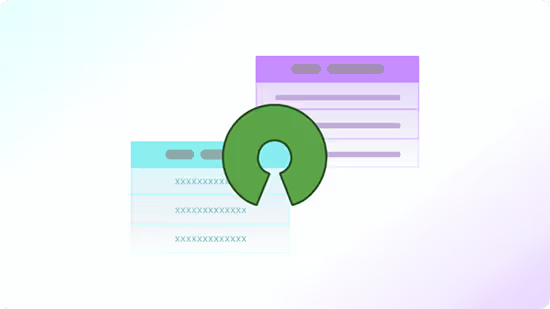
Building a scalable approach to PII protection within AI governance frameworks

As artificial intelligence (AI) systems become increasingly integrated into enterprise workflows, organizations are under pressure to make sure these tools are developed and deployed responsibly. Upholding that responsibility depends on a robust AI governance framework, one that guides how AI models are trained and used while also ensuring that sensitive data––like personally identifiable information (PII)––is handled both securely and ethically.
PII includes any data that can be used to identify an individual, including names, addresses, Social Security numbers, and login credentials. Likewise, PHI or personal health information encompasses personal data related to patients’ individual healthcare. Due to the sensitivity of this information, PII and PHI are subject to strict regulations like HIPAA and GDPR; and increasingly localized policies like CCPA or the California Consumer Privacy Act. Lack of compliance can lead to large penalties, reputational damage, and breaches of customer trust––which is why protecting PII must be a foundational part of any modern AI governance framework as a continuous practice, embedded in the lifecycle of AI and data use.
Four key pillars for effective, scalable PII protection in AI governance:
Data visibility
You can’t govern what you can’t see. Scalable AI governance begins with mapping your data landscape to get a comprehensive understanding of what data exists, where it resides, and whether it contains sensitive or regulated information Ensuring that systems are in place for the discovery and classification of PII are critical first steps for enforcing privacy at scale.
Access control
Not all users need access to sensitive data. To uphold the governance principle of least privilege, organizations need to define who can access what—and under which conditions. Instituting centralized, role-based access controls across development, testing, and production environments can help reduce the risk of accidental exposure or misuse of governed data. Likewise, leveraging tools with Role-based Access Controls (RBAC) can help to ensure that only users with the right level of privilege within are able to see and access sensitive data sets.
Data quality & integrity
AI systems rely on high-quality, consistent data, so datasets are incomplete, biased, or poorly governed, model performance and reliability suffer. Ensuring data is clean, up to date, and policy-compliant is essential both for ethical use as well as model accuracy and auditability.
Stewardship & ownership
Strong governance requires accountability. Clear data ownership and stewardship responsibilities help ensure that privacy, security, and ethical use are upheld across teams and business units. When everyone knows who is responsible for what data—and how to report and remediate issues—organizations can respond quickly to changing regulatory or operational requirements.
In this blog, we’ll look at how each of these pillars support scalable PII protection in the long term by helping organizations embed privacy into their AI workflows, reduce compliance risk, and build governance frameworks that can grow with evolving technologies and regulations.
Challenges of AI governance frameworks
Building a robust AI governance framework requires navigating a constantly evolving landscape of technical, operational, and ethical challenges. Many organizations, in the rush to implement responsible AI practices, overlook critical risks that can undermine data privacy efforts, especially around sensitive data.
The barriers to effective AI governance can include hidden vulnerabilities in data pipelines to inconsistent interfaces across tools––all of which can be costly. Let’s look at some of the pressing issues organizations must confront when scaling AI responsibly.
Hidden security risks
Even within governed environments, sensitive data can slip through the cracks –especially when legacy systems or unmanaged data lakes are involved. Without safeguards to mitigate external threats and bad actors – along with automated detection and de-identification of PII – models may be trained on real user data, exposing organizations to regulatory violations and potential breaches.
Irregular user interfaces
AI tooling multiple platforms, vendor services, and cloud-native environments. Each of these systems has a different interface for managing permissions or reviewing data lineage, making it very difficult to enforce consistent governance policies, especially at scale.
Unexplainability
Many AI models—especially deep learning systems—are black boxes, obscuring how decisions are made and making it difficult to audit how PII was used. This lack of transparency is a major problem in compliance workflows.
How to build a protected AI governance framework that scales
Creating an effective AI governance framework demands tooling to actively protect data, support compliance, and scale alongside your AI initiatives. Tonic.ai helps organizations build privacy into every step of their AI lifecycle, helping secure development and enable responsible innovation––all without sacrificing data utility.
Let’s run through a scalable approach to building a protected governance framework using Tonic.ai’s offerings.
Identify and classify PII automatically
The first step: know what you’re working with. Tonic.ai’s de-identification platforms, Tonic Textual and Tonic Structural, integrate PII detection directly into your data pipelines and use automated classification to identify sensitive fields. This helps eliminate guesswork and errors, especially when working with large datasets, and ensures alignment on exactly where protections need to be applied. It also accelerates compliance audits by giving legal and security teams a clear map of where privacy obligations exist.
Replace sensitive data with realistic alternatives
Textual and Structural then allow teams to generate realistic, de-identified data through advanced data masking and synthetic data generation. Unlike legacy masking methods––which degrade the original data quality––Tonic Structural maintains realism and referential integrity in its output datasets, enabling teams to test and train models in safe environments without compromising data context or functionality.
Enforce access controls with safe test environments
Tonic.ai’s solutions allow organizations to create safe development and testing environments without exposing raw production data. They uphold the principle of least privilege by integrating into CI/CD pipelines or sandbox environments, reducing the risk of accidental exposure or misuse of governed data. Consistent access control policies help ensure governed data stays governed—no matter where it's being used.
Scale governance with reusable data policies
Tonic Structural’s custom sensitivity rules and generator presets make it easy to apply consistent protections across datasets, teams, and environments. Reusable policies allow organizations to scale privacy controls without duplicating effort or increasing complexity, whether you’re supporting multiple dev teams or working to launch a new AI initiative. As your data estate grows, these reusable policies save time while still maintaining compliance.
Audit and maintain compliance readiness
By using built-in privacy controls and ensuring your AI systems never touch unprotected PII, Tonic.ai’s products support ongoing compliance with frameworks like HIPAA, GDPR, CCPA, and SOC 2. Tonic Structural’s audit trails allow you to demonstrate privacy-by-design across your AI lifecycle—something that is increasingly being required by regulators, enterprise customers, and internal risk teams.
Ensuring data governance for AI
Protecting PII within AI systems is a governance priority with large-scale potential repercussions for legal risk, operational efficiency, and public trust. As organizations scale their use of AI, they must adopt privacy-first frameworks that can adapt quickly to new data sources, development workflows, and compliance requirements––all without slowing down innovation.
Investing in strong governance frameworks pays off in other ways, too. It can accelerate model deployment, support internal alignment across teams, and––perhaps most importantly––build trust with customers and partners. As AI continues to evolve, a scalable approach to data governance positions your organization to innovate responsibly for the long term.
Tonic Textual and Tonic Structural make it possible to build AI with governed data by integrating automated PII detection, synthetic data generation, and secure testing environments, all of which reduce the possibility of exposure while maintaining data utility. With its reusable policies and audit-ready workflows, your team can move fast and stay safe without cutting corners.
Want to see the products in action? Connect with our team to learn how Tonic.ai can help you build stronger, safer AI governance frameworks from day one.


.svg)
.svg)





















.svg)



